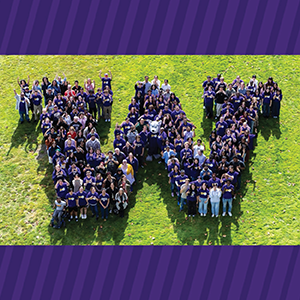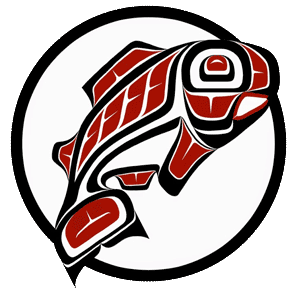
The Land Remembers: UW Tacoma’s Danica Miller on Indigenous Storytelling as Sovereignty, from Medicine Creek to the Modern Classroom
This autumn, the Washington State History Museum will be humming with quiet anticipation.
Inside the Great Hall, construction dust will have settled, and a new kind of exhibit will take its place — one that doesn’t wax nostalgic for a version of the Pacific Northwest frozen in time, but one that resonates with the stories that have always been here.
The upcoming exhibit is called “This is Native Land.”
And it is.
When exhibition curator Dr. Danica Sterud Miller walks across the UW Tacoma campus, she’s walking on the land of her ancestors.
Her father, Bill Sterud, longtime Chairman of the Puyallup Tribal Council, stood on the same terrain more than 35 years ago when the university broke ground.
Today, Miller is part of a new generation carrying that legacy forward — as a scholar, an educator and a member of the Puyallup Tribe of Indians who is helping her community (and her university) reimagine what storytelling and sovereignty can look like.
“The opportunity to teach American Indian studies on my ancestral land is unbelievable sometimes,” Miller reflects. “It’s a gift. It’s an honor. In many ways, it feels like this is exactly where I’m supposed to be.”
Miller, an associate professor of American Indian Studies at UW Tacoma and a leader of the tri-campus Center for American Indian and Indigenous Studies, has spent her career exploring how Native sovereignty and storytelling shape the way we understand this place we call home.
Her teaching integrates Lushootseed language preservation, community partnerships and ancestral ways of teaching grounded in mentorship and narrative. Now, she’s helping to bring that same spirit beyond the classroom.

Miller is one of the curators behind “This is Native Land,” a new exhibition opening this fall at the Washington State History Museum in Tacoma. The project, four years in the making, invites visitors to consider the region’s history — and future — through the lens of Indigenous sovereignty, identity and story.
This new permanent installation is a reclamation, an affirmation, and perhaps most importantly, a reminder: “We are here. We have always been here. And we always will be here,” Miller says simply. It’s the guiding theme for “This is Native Land” and, in many ways, her life’s work.
Land, Loss, Return and Remembering
To understand the importance of sovereignty in Miller’s work is to understand the story of this land itself.
If you’ve lived in the South Sound for long, you may have heard a few chapters of the story: how the Hudson’s Bay Company established a trading post at Fort Nisqually in 1833; how, by 1853, President Millard Fillmore declared Washington a territory of the United States. But not everyone knows the rest — that the warm welcome extended by the Puyallup people was met not with reciprocity, but with Westward expansion and erasure.
In the mid-19th century, the Puyallup people and several regional tribes, whose villages extended along the rivers and shores of the Puget Sound for thousands of years, would be systematically displaced from their ancestral homelands over generations to come.
In 1854, representatives of the U.S. government — aiming to secure additional land for European settlement — called a meeting of tribal leaders at Medicine Creek. The summit was marked by intimidation, deception and poorly translated legalese. After days of tense negotiations, the document was declared complete as tribal representatives were pressured into signing the Medicine Creek Treaty. Some of the signatures, historians believe, may have been forged or coerced.
All in all, the Medicine Creek Treaty promised a payment of $32,500 for 2.24 million acres of Native land ceded to the U.S. The resulting reservations confined entire nations to just 1,280 acres combined across three resource-poor land parcels, far from the rivers and lands that sustained Indigenous families in the Pacific Northwest since time immemorial.
The bleak real estate and broken promises led to unrest, sparking the Puget Sound Treaty War in 1855 and generations of resistance to follow. Tribes throughout the South Sound — including the Puyallup, Muckleshoot, Nisqually and Squaxin Island — fought not only for land, but for their right to exist as sovereign people. The war ended, but the struggle did not.
Ever since, Indigenous tribes throughout the Puget Sound region have fought for the rights guaranteed to them under those same treaties — from the Boldt Decision in 1974, which affirmed Native fishing rights, to the 1990 Land Claims Settlement that recognized the Puyallup tribe as a sovereign political force in Washington State.
And through it all, the same refrain: We are still here.
That history of resilience forms the foundation of “This is Native Land.”
The Danger of a Single Story
The exhibit uses fine art, documents, photography and first-person storytelling to explore Washington’s past and future through an Indigenous lens.
From the beginning, Miller and her collaborators — including co-curator Todd Clark and a Native advisory board of elders — envisioned a space that rejected the stillness and detachment typically found in traditional museum displays. “This is Native Land” invites touch, sound and humor. It makes room for contradiction. It welcomes joy alongside resistance, continuity alongside disruption.
Visitors can expect to encounter the hard truths of boarding schools and forced assimilation alongside the humor, resilience and creativity that have always defined Native life. “The intention of this exhibition is not to cast blame or make anyone feel bad about the actions of the past,” Clark emphasized in conversation with the Washington State Historical Society. “It is to recognize these acts as facts, and work together to build a path to healing.”
The new exhibit includes video installations, immersive media and Indigenous artwork curated by Clark and Miller. It invites Native elders, artists and youth to tell their own stories — several in Lushootseed, the Coast Salish language that once filled the air along Commencement Bay.
“Throughout the space, unlike most history museums, we’ve included lots of contemporary art,” Miller explains. “‘This is Native Land’ tells the story of Indigenous futures and all the possibilities and potential they hold. The through line of the exhibition is ‘we’ve always been here,’ and for me, that’s what comes to mind — all those future possibilities.”
Those possibilities are on full display: bold installations by Native artists, interactive storytelling stations and historic artifacts recontextualized through living voices. The exhibit stretches from ancient trade routes to the Fish Wars to present-day acts of cultural resurgence, but perhaps its most striking achievement is the noteworthy absence of glass.
“Many of our elders told us that they didn’t want to see traditional items behind glass,” Miller says. “I saw Native children as the audience for this exhibit. They should be able to touch and hold the things that belong to them,” she explains. “Nothing says, ‘This is a people of the past’ more than something behind exhibit glass,” Miller laughs. “We commissioned baskets and other traditional objects throughout ‘This is Native Land’ that could be touched and engaged with.” One design decision, removing the barrier between viewer and object, transforms the entire experience of the exhibition.
Community collaboration was another transformative force in the creative process. Growing up on the reservation, Miller leaned into a lifetime of relationships within the Puyallup tribe and beyond to capture a range of Indigenous communities in the exhibit. “I was lucky to have four years to do this work. Much of it was spent listening and gathering what we were hearing from different Native communities — we had to figure out what this exhibit was going to look like, and that took a lot of partnership.”
Miller and her collaborators knew it was crucial for “This is Native Land” to rise above a display of artifacts, opting instead for a conversation across generations. Development of the exhibit was guided by an advisory board of Native elders who held the curators accountable to both truth and balance.
The exhibit resists the tidy narrative arcs of conventional history. Instead, it layers sovereignty alongside survival, laughter beside loss.
“The elders were clear that they wanted the truth to be told,” Miller recalls. “The truth encompasses both the brutal history of settler colonialism, but also the truth is Native resistance, joy and the continuation of our traditional ways,” Miller explains. “That guided what we chose to show in this exhibition… What do Native children need to see?”
Curating Sovereignty in the Present Tense
Sovereignty — political, cultural and spiritual — is at the core of Miller’s academic work. Her research explores textual constructions of Indigenous sovereignty, Federal Indian law and Puyallup resistance.
Storytelling as sovereignty is the thematic through line that allows “This is Native Land” to resonate at such a compelling frequency.
The exhibit presents sovereignty both as a legal ruling, and as something lived one day at a time. It shows the ways Indigenous communities have advocated for their rights: through environmental activism, through protecting children, through fishing and through art.
Miller’s scholarly work at UW Tacoma explores how sovereignty manifests in language, law and story. “This is Native Land” stewards much-needed perspectives in a tangible, experiential way.
“When I think about different people coming in and seeing the exhibit, I hope they have a better understanding of legal and cultural definitions of sovereignty,” she says. “Within the United States’ Western framework of law, treaties are the law of the land. We were sovereign nations before the United States, and we continue to be so today.”
The Future is Already Here
“This is Native Land” may reflect on centuries of history, but its gaze is fixed forward: grounded in an ancestral truth, but ready for whatever lies ahead.
“When I think of Indigenous futures,” Miller reflects, “it looks like whatever Native children can imagine.”
Part exhibit, part blueprint, “This is Native Land” is a call to remember that Indigenous history doesn’t live behind glass in a museum. It walks, speaks, laughs and creates. Indigenous stories belong to the future just as much as the past. “I wanted Native children to see their experiences validated,” Miller says. “I wanted them to have the opportunity to tell their stories.”
Outside the museum, the waterway glints under an autumn sun. Students cross the 21st Street Bridge as the Puyallup River winds quietly toward Commencement Bay, carrying centuries of memory in its current.
It’s easy, standing there, to think of how much The City of Destiny has changed, but “This is Native Land” reminds us how much hasn’t.
The South Sound has always been Indigenous. The stories, the histories, the languages — they never left.
Through Dr. Miller’s work, they’re being heard.
You’ll hear them in the galleries this fall. You’ll hear them on campus. And if you listen closely enough, you’ll realize they’ve been here all along — in classrooms, in museums and in the futures Indigenous children are already imagining.
“This Is Native Land” is open now at the Washington State History Museum in Tacoma. Admission to the museum is free for UW Tacoma students. Dr. Danica Sterud Miller is an Associate Professor of American Indian Studies at UW Tacoma and a member of the Puyallup Tribe of Indians.



